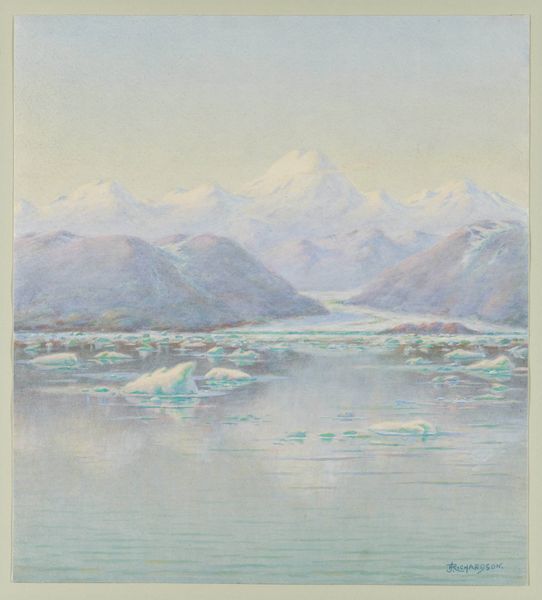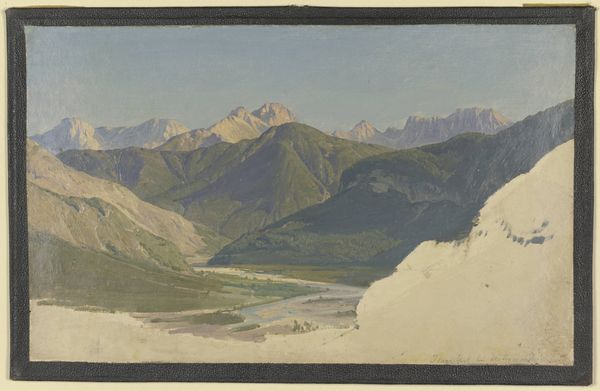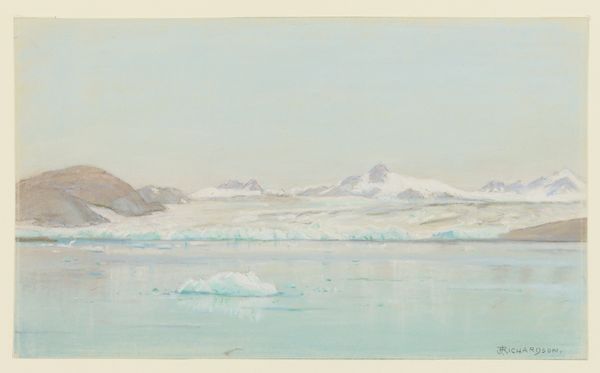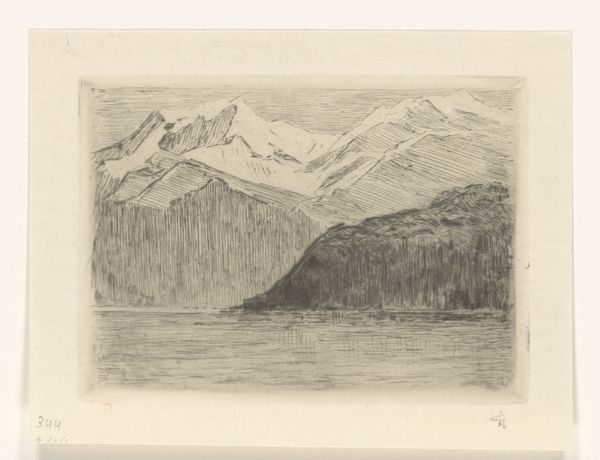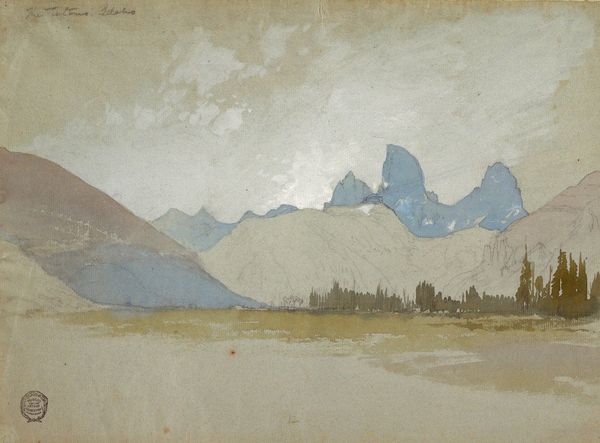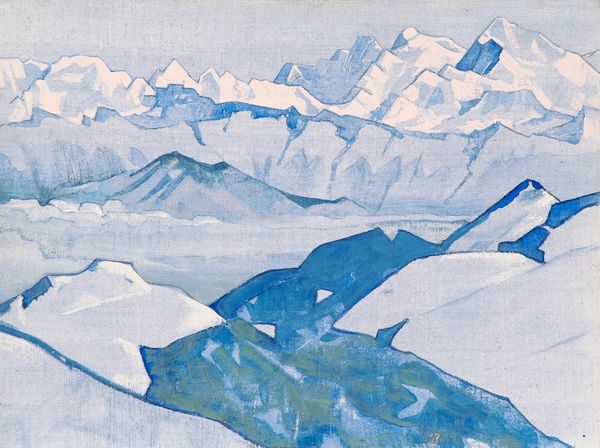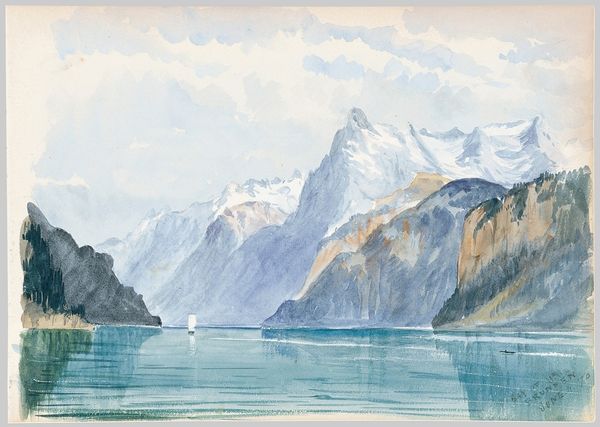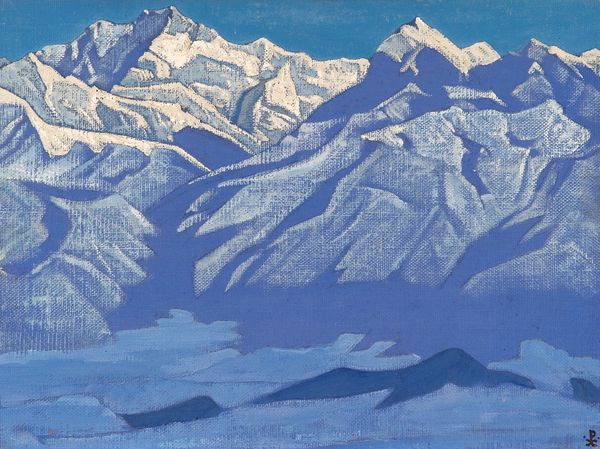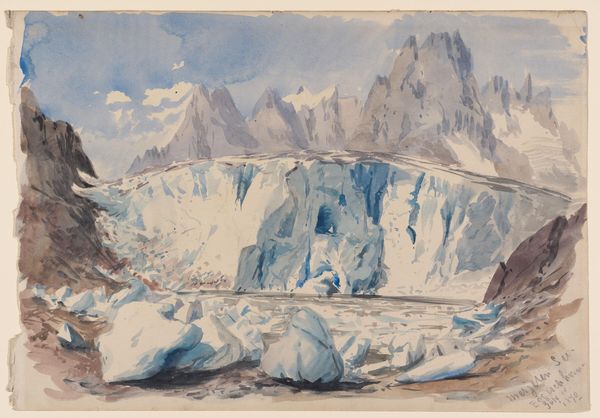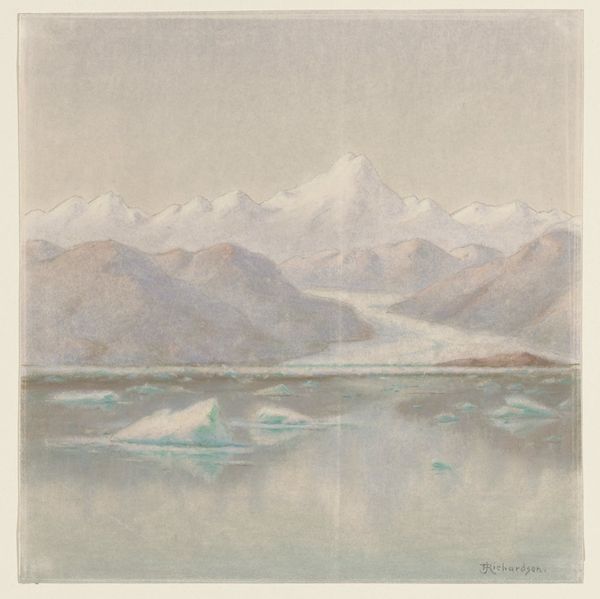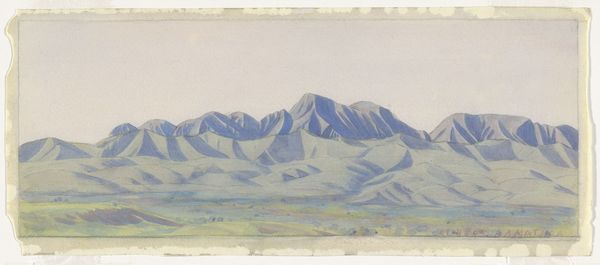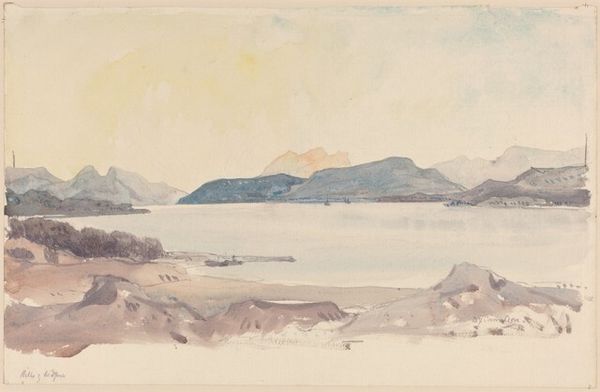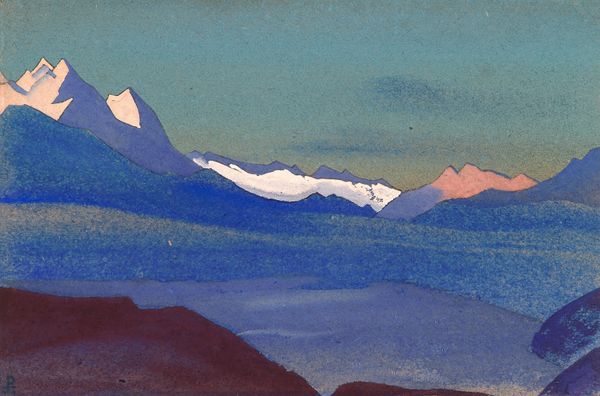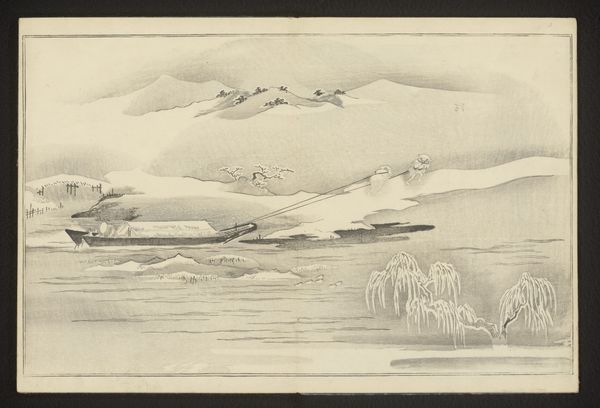
Dimensions: 11 3/4 x 16 7/8 in. (29.85 x 42.86 cm) (image)
Copyright: Public Domain
Editor: So, this is Gustav Bechler’s "Spiegeleis," a woodcut print from the late 19th century. I’m really drawn to the coolness of the color palette. It’s such a calm, serene landscape. How do you interpret this work? Curator: The composition immediately strikes me. Note how the horizontal bands of the sky, mountains, and water create a sense of planar depth, while the limited palette emphasizes the formal relationships between these elements. Consider, also, the artist’s technique with the woodcut. What does the grain contribute to the piece? Editor: I see what you mean about the horizontal bands. The graininess, I think it kind of blurs the line between the water and the reflection of the mountains. Was this effect common with woodcut prints during this period? Curator: The rough texture resulting from the woodcut technique certainly disrupts any attempt at a purely mimetic representation. Notice, also, how this very disruption forces the viewer to actively construct the image, to complete the landscape, so to speak. Does that conscious effort alter the way we interact with the piece? Editor: Definitely, it keeps the image from becoming too placid; it's like you are discovering details within the landscape slowly. Looking at how the tones and shapes fit together offers something new each time. Curator: Precisely! And that interplay between texture, form and perception are key to its aesthetic power. This examination has changed my relationship with the work. Editor: Yes, and I have new understanding of how to describe this work to a visitor.
Comments
No comments
Be the first to comment and join the conversation on the ultimate creative platform.
